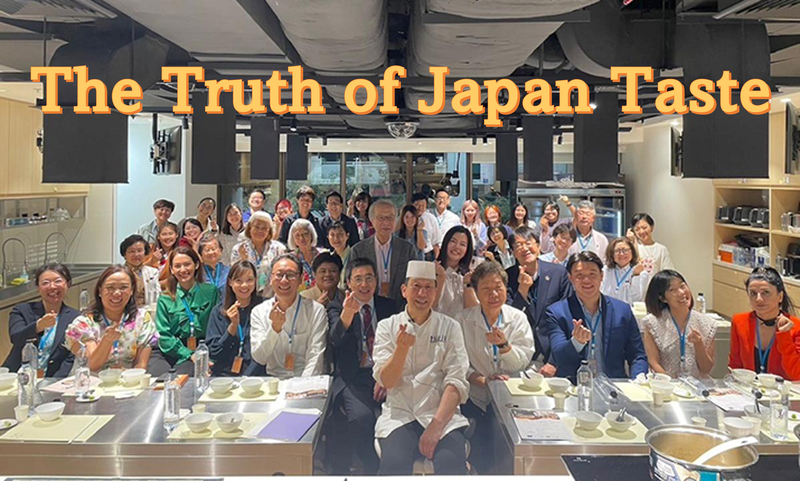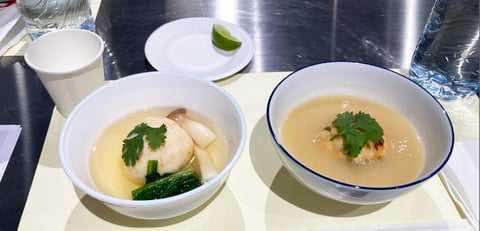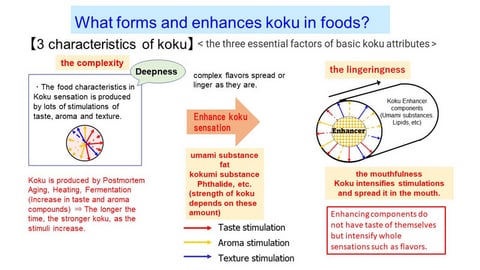Truth of Japan Taste – a cooking event in Thailand to know umami and koku
January 2024

Japan and Thailand are 5000 kilometers apart. However, the cuisines of both countries have several things in common. One of them is that they both utilize umami substances and koku in their cooking. Both cuisines use seasonings to add umami substances or koku to their dishes. For example, Japanese cuisine uses miso and soy sauce, while Thai cuisine uses nam-pla or shrimp paste, seasonings made from fermented fish or shrimp. However, many do not know what umami and koku taste like nor what effect they have on foods. To experience this a cooking event was held in Bangkok, Thailand.
The cooking event - Truth of Japan Taste cooking - held on January 24, was organized by SSBW*, a Thailand and ASEAN based network of researchers and companies on sensory science**.
*SSBW:Network for Sensory Science for Better Well-being. The purpose of this network is to improve the wellbeing of human society by sharing the latest findings on sensory science to create a healthy and sustainable food environment.
**sensory science: a scientific field that studies how we perceive the world outside our bodies through the five senses (sight, hearing, smell, taste, and touch) and how the information we perceive affects our preferences and emotions.
40 people including researchers of sensory science and nutrition science, and business people participated in this cooking event. Dr. Nobuyuki Sakai, Professor at Tohoku University and President of The Society for Research on Umami Taste, gave the opening remarks, followed by speeches by Dr. Suwimon Keeratipibul of Chulalongkorn University and Dr. Chanida Pachotikarn, president of the Thai Dietetic Association, gave speeches. They expressed the importance of having a food system that is both environmentally friendly and healthy for everybody and hoped that this event would help people to think about their nutrition and health.
The main event of the day was a gastronomic collaborating between a washoku chef and a researcher.
Chef Nobuaki Obiki of Tsuji Culinary Educational Research Institute Co., Ltd gave a cooking demonstration, while Dr. Toshihide Nishimura, a vice chairman of the Umami Information Center explained umami and koku in foods.
Chef Obiki demonstrated his highly refined washoku techniques and explained various cooking tips. He made dashi, bouillon base of washoku, with kombu and katsuobushi prepared from Japan, and cooked fresh prawns procured at a local market to make two types of soup with prawn dumplings.
The soup in the first bowl was made into a clear soup, and the second bowl was made into a miso soup. The idea was to taste the two types of bowls to experience and compare the umami and koku.
Dr. Nishimura explained scientifically what umami substances in dashi are derived from and what synergistic effect is, and explained what "koku" is.
There are three elements that are essential to bring koku to foods: complexity, mouthfulness (richness), and lingeringness.
Dr. Nishimura explained how koku is formed and enhanced by umami substances.
During the tasting time, participants compared which soup they felt had more koku. The result was unanimous: "The second soup, made with miso, has a stronger koku taste.” The participants were able to perceive the difference in the elements of koku: complexity, mouthfulness (richness), and lingeringness.

However, the evaluation of palatability was split. Each participant recognized that the sense of good taste differs depending on one's tastes, cultural background, and other factors.
It has been 10 years since Japanese food was registered as a UNESCO Intangible Cultural Heritage.
In Thailand, the world-famous " Tom Yam Koong " is also preparing for registration. Dr. Nishimura has expressed his interest to study umami substances and koku in tom yum kung.
What is the function of umami, what is koku, and how do they relate to our health? This cooking event was an opportunity for all participants to think about the relationship between taste and nutrition, and between cooking and wellbeing, through learning about the elements of deliciousness that are common to both countries.

